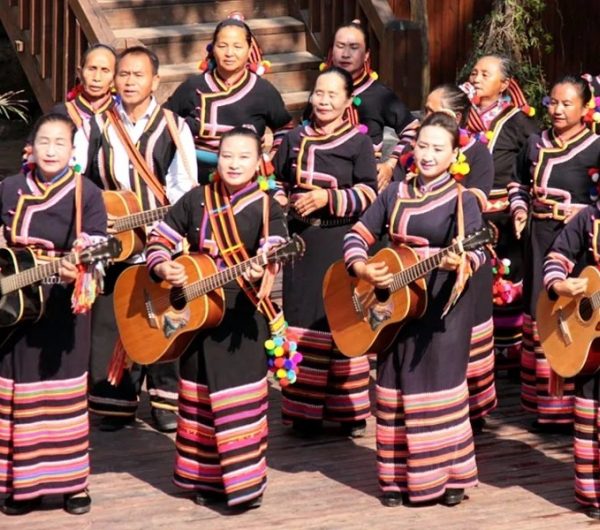Puer Travel Weather and Climate in January
Famous worldwide for its namesake tea, Pu’er(普洱) in southern Yunnan is a land of rolling mountains, ancient tea forests, and slow-paced minority villages. In January, while much of China remains cold, Pu’er enjoys a gentle subtropical winter, ideal for tea-tasting, forest walks, and cultural immersion. It’s a perfect off-the-beaten-path destination for eco-tourism, wellness travel, and tea lovers escaping the winter gloom.

☀️ Weather in January
| Feature | Data | Description |
|---|---|---|
| 🌡️ Average High Temp | 20–24°C (68–75°F) | Mild and comfortable |
| 🌡️ Average Low Temp | 8–12°C (46–54°F) | Cool but not cold, especially in the morning |
| 🌧️ Rainfall | 10–25 mm | Dry season with occasional mist or light fog |
| ☀️ Sunshine | 20+ days | Mostly sunny with clear mountain air |
✅ Good to Know: While lowlands are warm, higher elevations like Jingmai Mountain can be chilly in the early morning.
👕 What to Wear in January
Daytime: Long-sleeve shirt or light jacket, breathable pants
Evening: Fleece or warm jacket, especially in tea villages at altitude
Footwear: Trekking shoes or sturdy sneakers
Extras: Sun hat, sunglasses, scarf for cool mornings, thermos for tea lovers

🧭 What to Do in January
🍵 Explore Ancient Tea Forests (景迈山 )
Wander through UNESCO-listed tea forests with trees over 1,000 years old
Learn about Pu’er tea’s fermentation, picking and pressing from local farmers
Stay in Dai or Bulang minority villages, enjoy sunrise over misty hills with tea in hand
January is post-harvest season, ideal for slow travel, meditation, and tasting aged teas

🐘 Pu’er Sun River National Park (思茅)
Home to wild Asian elephants, hornbills, and tropical biodiversity
Walk canopy paths, visit the elephant breeding center, and learn about conservation efforts
January’s dry weather is perfect for jungle trekking
🏘️ Experience Minority Village Life
Visit Hani, Lahu, Bulang, Dai communities with rich tea culture
Watch handmade tea pressing, traditional textile weaving, and wooden house building
Join in local winter rituals and firewood cooking

🎉 Festivals & Cultural Events in January
🧧 Minority New Year Preparations (mid-to-late January)
Bulang, Lahu, and Wa people begin early Lunar New Year rituals
Villages host small-scale blessing ceremonies, ancestral dances, and community feasts
Great time to witness authentic, non-touristy celebrations
🎶 Mountain Village Gatherings (variable)
Local gatherings for tea swapping, matchmaking, and storytelling
Some villages organize tea and music evenings around campfires
🍲 What to Eat in January
Bulang-style roast pork – served with pickled greens and chili salt
Sticky rice cooked in bamboo tubes – fragrant and warm
Lahu smoked meats – preserved for the winter season
Fresh wild herbs and tea leaves in stir-fries
Pu’er tea eggs, tea soup, and tea-flavored desserts
🍵 January is the best time to drink aged ripe Pu’er (熟普) – rich, mellow, and perfect for cool evenings.

✅ Why Visit Pu’er in January?
| Experience | Highlight |
|---|---|
| 🍃 Nature | Ancient tea forests, elephant parks, mountain sun |
| 🫖 Tea Culture | UNESCO tea heritage, small-batch tastings, village immersion |
| 🎭 Traditions | Minority winter rituals, authentic slow-paced life |
| 🌤️ Climate | Dry, sunny, and comfortable — ideal for hiking and tea-tasting |
| ✨ Peace | Off-season = fewer tourists, more authenticity |
✨ Pu’er in January: A Warm Cup of China’s Highland Heritage
Imagine sitting under a 500-year-old tea tree, sipping earthy ripe Pu’er while watching the clouds drift over forested hills. Pu’er in January isn’t just a destination — it’s a retreat for the soul, rooted in nature, culture, and time-honored tea traditions.

 7 Days GolfingTour
7 Days GolfingTour
 8 Days Group Tour
8 Days Group Tour
 8 Days Yunnan Tour
8 Days Yunnan Tour
 7 Days Shangri La Hiking
7 Days Shangri La Hiking
 11 Days Yunnan Tour
11 Days Yunnan Tour
 6 Days Yuanyang Terraces
6 Days Yuanyang Terraces
 11 Days Yunnan Tour
11 Days Yunnan Tour
 8 Days South Yunnan
8 Days South Yunnan
 7 Days Tea Tour
7 Days Tea Tour
 8 Days Muslim Tour
8 Days Muslim Tour
 12 Days Self-Driving
12 Days Self-Driving
 4 Days Haba Climbing
4 Days Haba Climbing
 Tiger Leaping Gorge
Tiger Leaping Gorge
 Stone Forest
Stone Forest
 Yunnan-Tibet
Yunnan-Tibet
 Hani Rice Terraces
Hani Rice Terraces
 Kunming
Kunming
 Lijiang
Lijiang
 Shangri-la
Shangri-la
 Dali
Dali
 XishuangBanna
XishuangBanna
 Honghe
Honghe
 Kunming
Kunming
 Lijiang
Lijiang
 Shangri-la
Shangri-la
 Yuanyang Rice Terraces
Yuanyang Rice Terraces
 Nujiang
Nujiang
 XishuangBanna
XishuangBanna
 Spring City Golf
Spring City Golf
 Snow Mountain Golf
Snow Mountain Golf
 Stone Mountain Golf
Stone Mountain Golf














